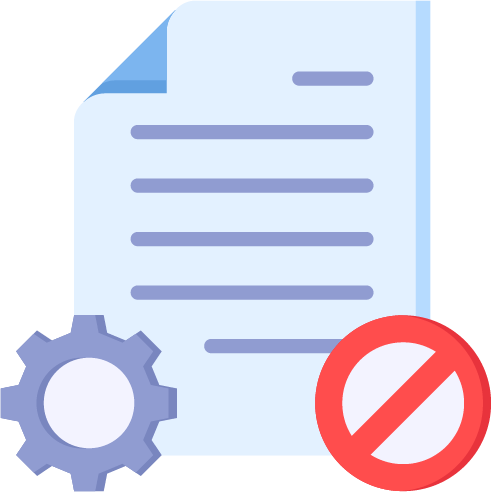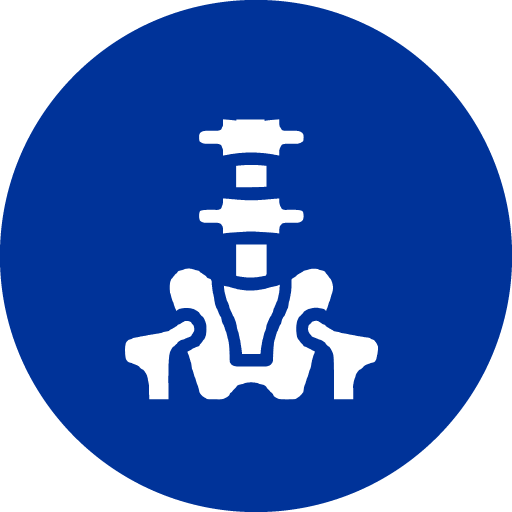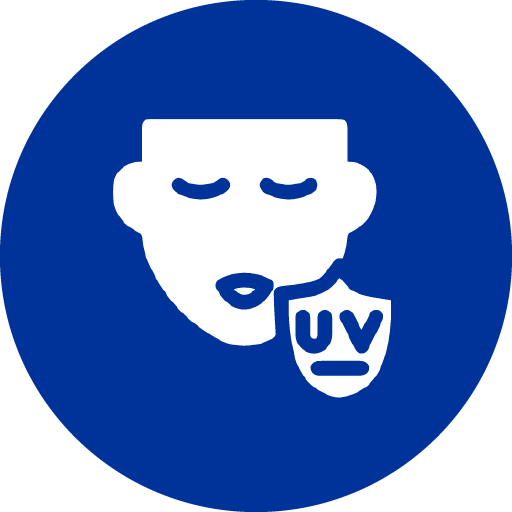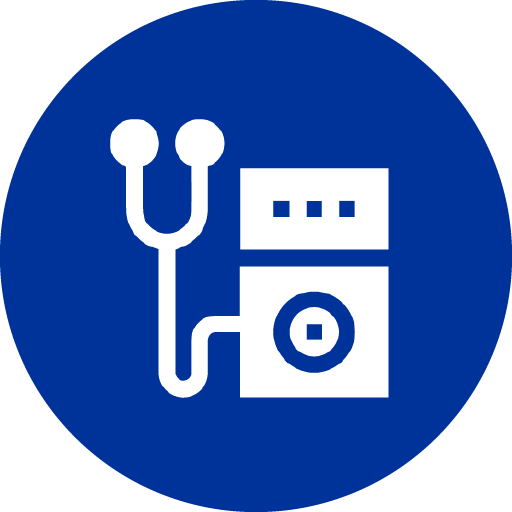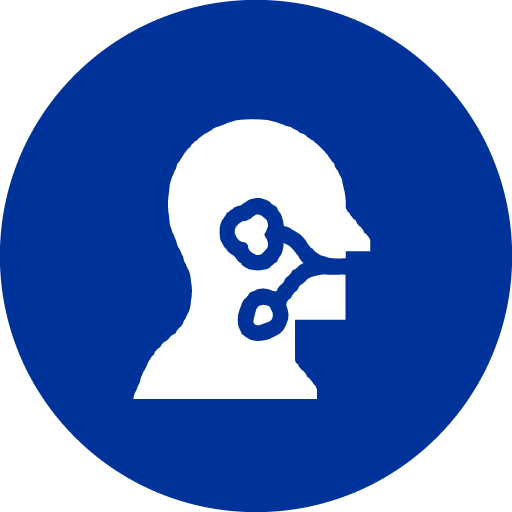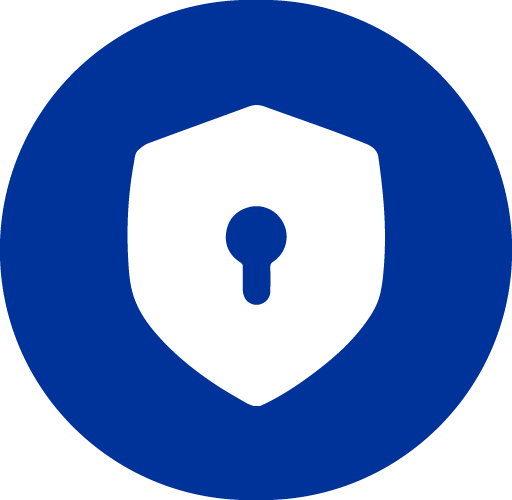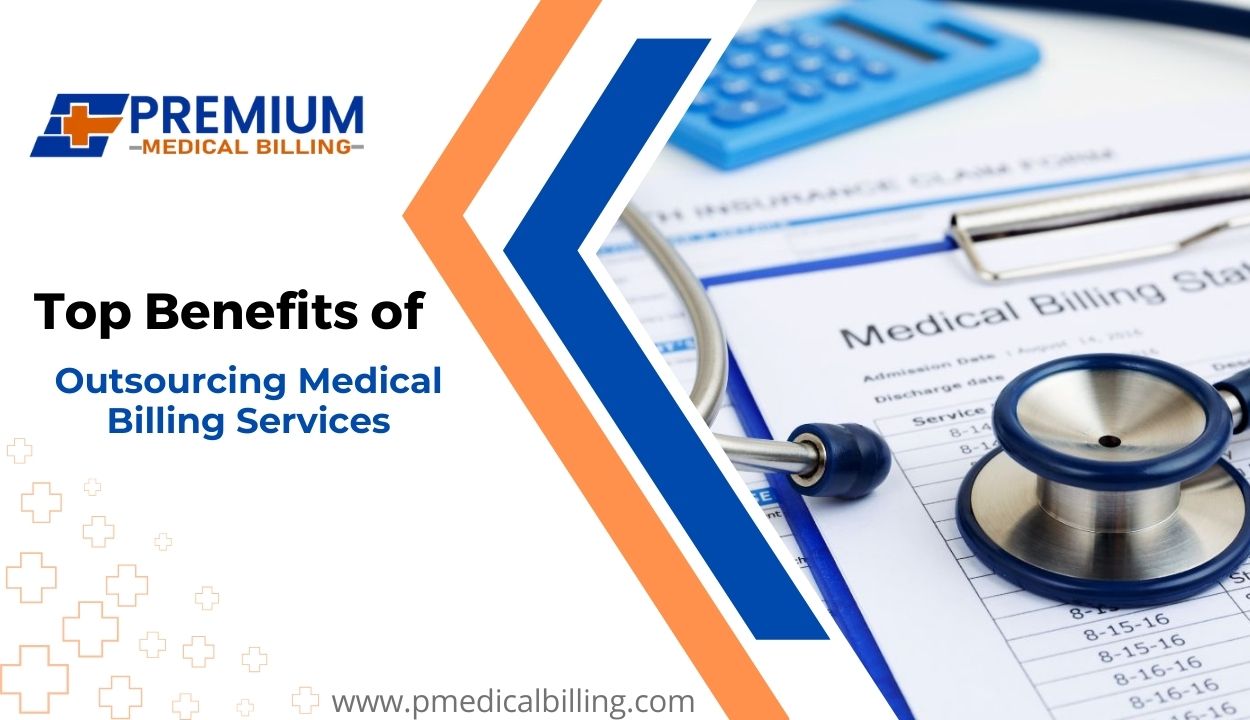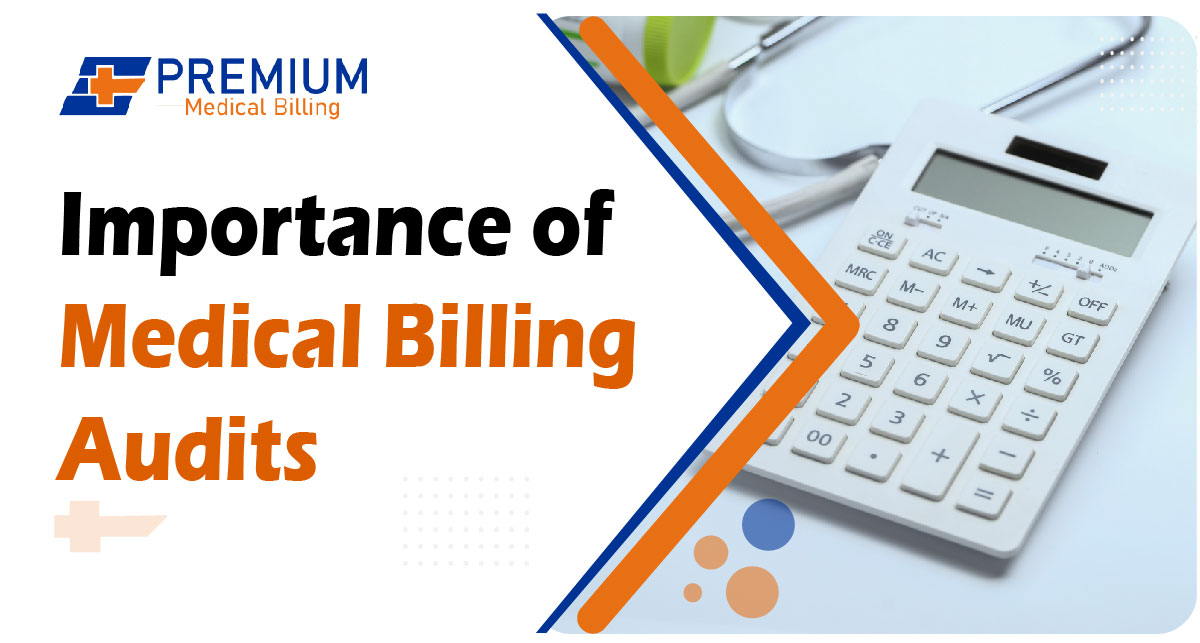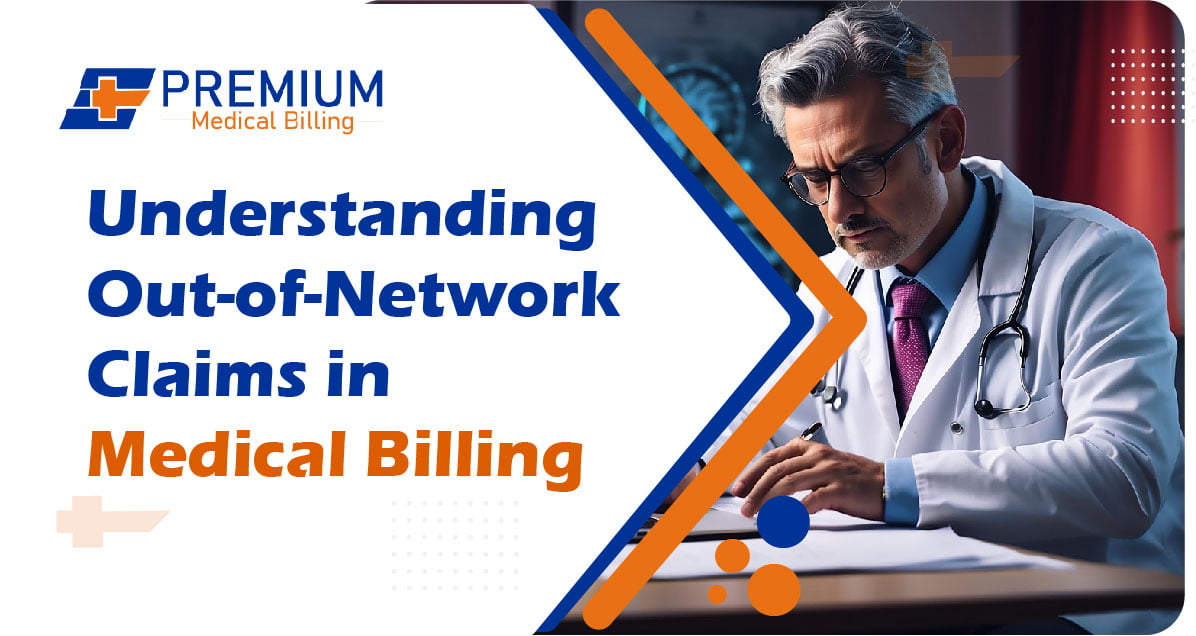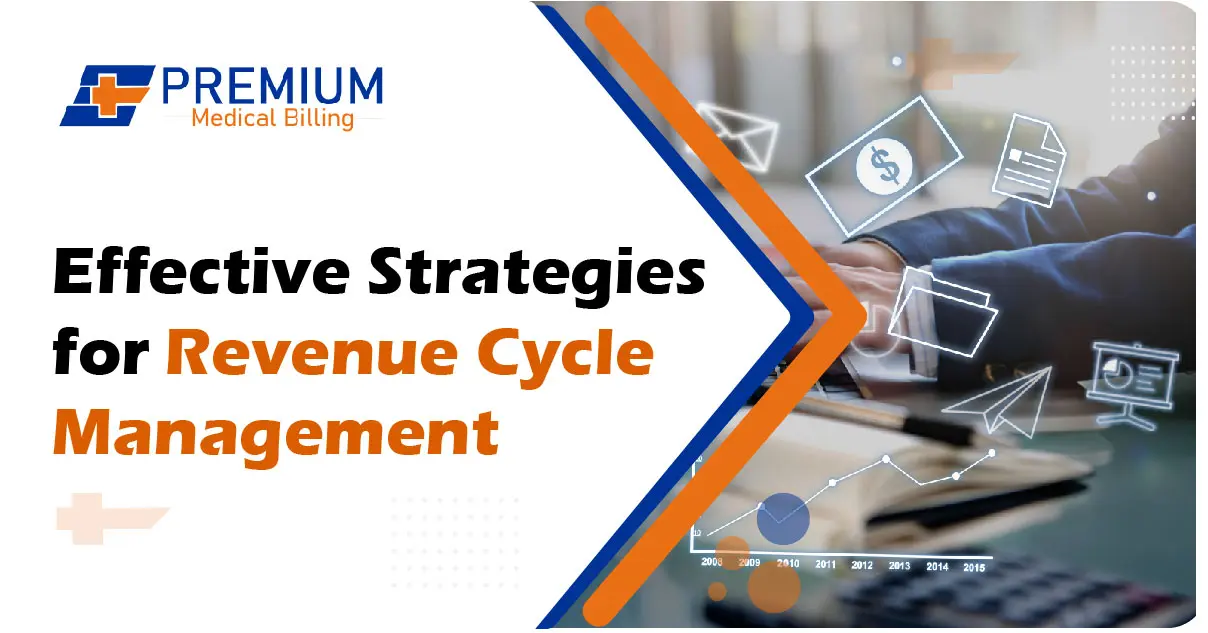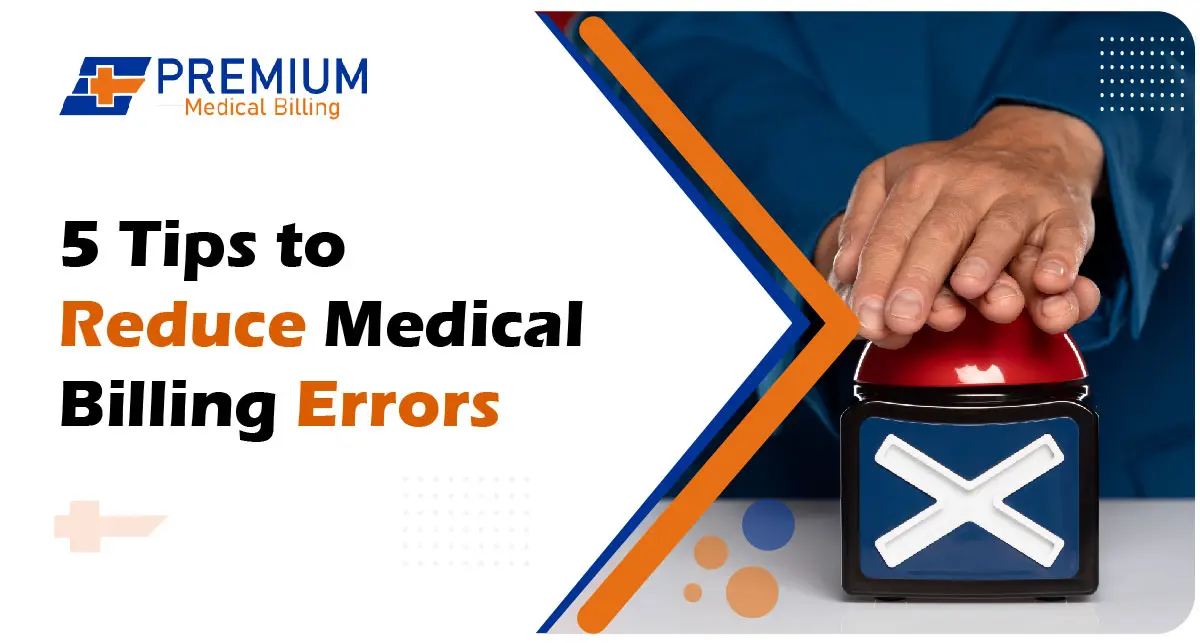In today’s swiftly evolving healthcare panorama, powerful economic control is greater essential than ever. Healthcare companies face increasing pressure to optimize their sales at the same time as delivering exceptional patient care. Healthcare Revenue Cycle Management (RCM) has emerged as a strategic answer that drastically impacts profitability. By streamlining processes which include scientific billing services, scientific coding, and denial management, healthcare corporations can maximize revenue and decorate ordinary financial health. This article delves into how powerful RCM practices can boost healthcare income, highlighting the key additives and techniques that make a contribution to achievement. 1. Understanding the Revenue Cycle Management Process Revenue Cycle Management encompasses all administrative and scientific features that make contributions to the capture, control, and series of patient provider revenue. This procedure begins with patient registration and extends thru billing and collections. Understanding this cycle is vital for identifying areas for development. Key Components of RCM: Patient Registration: Accurate series of patient statistics to ensure that the billing method starts offevolved off on the proper foot. Medical Coding: Converting healthcare services into universally identified codes that payers use to process claims. Claims Submission: Submitting claims to insurance businesses for repayment. Payment Posting: Recording bills received from sufferers and insurers. Denial Management: Addressing and resolving claims which might be rejected by using payers. 2. The Role of Medical Billing Services in RCM Medical billing services are indispensable to the RCM method. These services take care of the monetary factors of patient care, making sure that healthcare vendors are reimbursed appropriately and promptly for his or her services. Benefits of Medical Billing Services: Expertise in Billing Procedures: Professional billers are skilled to navigate complicated billing codes and policies, making sure that says are submitted correctly. Reduced Administrative Burden: By outsourcing scientific billing, healthcare providers can focus on affected person care rather than administrative duties, improving usual performance. Improved Cash Flow: Effective medical billing services assist to accelerate the claims manner, main to faster reimbursements and improved cash float. 3. Importance of Accurate Medical Coding Accurate medical coding is a cornerstone of a success sales cycle control. Codes are essential for determining repayment fees and making sure compliance with policies. Errors in coding can lead to denied claims and good sized revenue loss. How Medical Coding Affects RCM: Impact on Reimbursements: Correct coding guarantees that carriers are reimbursed at suitable quotes, maximizing sales. Compliance: Proper coding reduces the threat of audits and consequences, defensive healthcare companies from monetary losses. Efficiency: Streamlined coding techniques make contributions to quicker claims submissions and stepped forward operational performance. 4. Effective Denial Management Strategies Denial control is a crucial issue of RCM that specializes in analyzing and addressing claims that insurers reject. Effective control of denied claims can substantially effect a healthcare provider’s bottom line. Key Denial Management Techniques: Root Cause Analysis: Identifying the motives in the back of denials can assist businesses put into effect corrective measures to prevent destiny occurrences. Appeal Processes: Establishing a clear method for appealing denied claims will increase the probabilities of a hit repayment. Data tracking and Reporting: Keeping distinctive facts of denied claims permits providers to music tendencies and expand strategies for development. 5. Leveraging Billing Software for Efficiency Utilizing advanced billing software can dramatically enhance the RCM method. These gear automate many factors of clinical billing and revenue cycle control, leading to advanced accuracy and efficiency. Advantages of Billing Software: Automation of Tasks: Automated billing software program reduces the danger of human error by way of streamlining declare submissions and payment postings. Real-Time Analytics: Many billing systems offer real-time insights into monetary performance, supporting agencies make knowledgeable choices. User-Friendly Interfaces: Modern billing software program is designed for ease of use, enabling group of workers to manage billing responsibilities effectively. 6. The Financial Impact of Effective RCM Implementing a comprehensive revenue cycle control method can lead to large economic profits for healthcare organizations. By optimizing billing tactics, enhancing coding accuracy, and enhancing denial management, companies can expect to see a boom in profitability. Financial Benefits of Effective RCM: Increased Revenue: By ensuring medical coding and green billing procedures, healthcare organizations can maximize reimbursements. Reduced Costs: Streamlined RCM methods lead to decrease administrative costs and decreased days in debts receivable. Enhanced Patient Satisfaction: Efficient billing practices contribute to a higher affected person enjoy, fostering loyalty and repeat business. Conclusion: Unlocking Profit Potential through Revenue Cycle Management In end, powerful Revenue Cycle Management is an essential element in boosting healthcare profits. By leveraging expert clinical billing services, ensuring accurate scientific coding, enforcing robust denial control strategies, and using advanced billing software program, healthcare companies can beautify their financial overall performance and operational performance. For healthcare companies trying to optimize their sales cycle and maximize income, making an investment in comprehensive RCM strategies is vital. Embracing those practices no longer most effective improves the monetary fitness of your organization however additionally complements the pleasant of care provided to sufferers. For greater insights on scientific billing and sales cycle control, visit pmedicalbilling.
Enhancing Profitability with Revenue Cycle Management
In the competitive healthcare landscape, enhancing profitability is a key priority for healthcare providers. However, with rising operational costs, complex regulations, and the challenges of maintaining high-quality patient care, improving financial performance can be difficult. One of the most effective ways to drive profitability while ensuring patient satisfaction is through Revenue Cycle Management (RCM). Revenue Cycle Management is a critical process that encompasses the entire lifecycle of a patient’s financial interaction with healthcare providers, from the moment an appointment is scheduled to the final payment of medical bills. It includes various interconnected processes such as medical billing services, medical coding, claims processing, payment collections, and managing denied claims. Leveraging sophisticated billing software and best practices can make RCM more efficient and significantly boost the financial health of any healthcare organization. In this article, we will delve into how Revenue Cycle Management can enhance profitability for healthcare providers, the integral role of medical billing services and medical coding, and the impact of advanced billing software on optimizing the entire revenue cycle. What is Revenue Cycle Management (RCM)? At its core, Revenue Cycle Management is the process that healthcare providers use to track patient care from initial registration to the final payment of their medical bills. It encompasses various financial and administrative functions, such as patient scheduling, insurance verification, medical billing, coding, claims management, payment posting, and accounts receivable management. The primary goal of RCM is to ensure that healthcare providers are paid promptly and accurately for their services. Effective RCM ensures that healthcare organizations can maintain a steady cash flow while minimizing claim rejections and denials. A well-structured RCM system allows healthcare providers to focus on what matters most: delivering excellent patient care while keeping operational costs low and revenues high. The Role of Medical Billing Services in Revenue Cycle Management Medical billing services are an essential part of Revenue Cycle Management. They serve as the bridge between healthcare providers and insurance companies or patients, ensuring that all services provided are billed correctly and that healthcare organizations are reimbursed for their work. The billing process begins once a patient receives healthcare services. Medical billing specialists work with medical coders to translate the patient’s treatment, diagnosis, and procedures into standardized codes using systems such as ICD-10 and CPT. these codes are then used to submit claims to insurance companies for payment. 1. Accurate Claims Submission One of the key functions of medical billing services is ensuring that claims are submitted accurately and in compliance with insurance company policies. Errors in claim submission can result in delays, underpayments, or denials, which negatively impact cash flow. A proactive billing team ensures that all the necessary patient information, insurance details, and procedure codes are included in the claim submission. This reduces the risk of denied claims and allows healthcare providers to receive payments faster. 2. Claim Denial Management Denied claims are one of the most significant challenges healthcare providers face. Medical billing services play a critical role in managing claim denials. By analyzing denial trends and addressing the root causes of these rejections, billing specialists can identify patterns and implement corrective actions. This improves the likelihood of successfully resubmitting claims and securing reimbursement. Medical Coding: The Backbone of Revenue Cycle Management Medical coding is a foundational aspect of Revenue Cycle Management. Coders are responsible for translating patient diagnoses, treatments, and services into universally accepted alphanumeric codes that are used for billing purposes. These codes are critical because they determine how much healthcare providers are reimbursed for their services. 1. The Importance of Accurate Medical Coding Accurate medical coding is essential for the success of any RCM system. Incorrect or incomplete coding can lead to claim denials, underpayments, or audits from insurance companies. Additionally, incorrect coding can have legal implications, especially in cases of coding fraud or non-compliance with healthcare regulations. To ensure accurate coding, healthcare providers should invest in experienced coders or outsource coding to specialized medical coding services. Coders must stay up-to-date with changes in coding guidelines and regulatory updates to maintain compliance and maximize reimbursement. 2. ICD-10 and CPT Codes The two primary coding systems used in healthcare are ICD-10 (International Classification of Diseases) and CPT (Current Procedural Terminology). ICD-10 codes are used to classify diagnoses, while CPT codes are used to describe medical procedures and services. Ensuring that the correct codes are applied to each claim is essential for minimizing errors and ensuring that healthcare providers receive the full payment they are entitled to. Coders must understand both coding systems and be familiar with payer-specific coding rules to maximize the efficiency of the revenue cycle. The Role of Billing Software in Optimizing RCM In today’s digital age, advanced billing software has become a game-changer in Revenue Cycle Management. From automating routine billing tasks to offering insights into financial performance, billing software is essential for optimizing the RCM process and enhancing profitability. 1. Automation of Billing Processes One of the most significant advantages of billing software is the automation of routine billing tasks. Software solutions can automatically generate invoices, process payments, and track outstanding balances. Automation significantly reduces the administrative burden on healthcare staff and minimizes the risk of human error. By automating these processes, healthcare providers can increase the speed and accuracy of billing. Leading to quicker reimbursements and fewer delays. Additionally, automation frees up staff time, allowing them to focus on more strategic tasks. Such as analyzing denial trends or improving patient engagement. 2. Real-Time Analytics and Reporting Another key benefit of billing software is the ability to provide real-time insights into the financial health of a healthcare organization. Billing software solutions offer comprehensive reporting and analytics features. That allow providers to track claim statuses, patient payments, outstanding balances, and more. Real-time reporting empowers healthcare providers to make data-driven decisions. Such as identifying areas of revenue leakage, spotting trends in claim denials, and improving patient collections. With detailed reports, providers can optimize their revenue cycle and maximize cash flow. 3. Integration with Medical Billing and Coding The best billing software
Top Benefits of Outsourcing Medical Billing Services
In the fast-evolving healthcare industry, outsourcing medical billing services has become a strategic decision for many healthcare providers. Handling billing in-house can be time-consuming, prone to errors, and can divert attention away from core patient care. To overcome these challenges, outsourcing is becoming increasingly popular. But what are the true benefits of outsourcing medical billing services, and why should you consider it for your practice? Streamlining Medical Billing Processes Medical billing is a complex procedure that requires attention to detail and a deep understanding of medical coding and insurance processes. By outsourcing, healthcare providers can benefit from the expertise of professionals who specialize in these areas. They use advanced technology and stay up-to-date with regulatory changes, ensuring smooth operations. An outsourced team has a systematic approach to denial management, addressing claim denials quickly and efficiently, ensuring faster payment cycles, and boosting revenue. This efficiency not only enhances cash flow but also minimizes administrative burdens on your in-house staff. Expertise in Medical Coding Medical coding is a vital aspect of the billing process. With ever-changing codes and regulations like ICD-10, it can be difficult for an in-house team to keep up. Outsourcing medical billing services ensures that you have experienced and certified coders working on your claims, reducing the risk of claim rejections due to coding errors. This expertise ensures compliance with the latest healthcare regulations and improves accuracy in claim submissions. Improved Denial Management and Claim Resolution One of the most significant benefits of outsourcing medical billing services is effective denial management. Healthcare practices often struggle with denied claims, leading to delayed payments and reduced cash flow. Outsourcing partners are well-versed in handling denials, resubmitting claims, and ensuring that payment is received as quickly as possible. Outsourced medical billing teams can identify common reasons for denials and implement strategies to reduce them. This ensures that your practice experiences fewer delays in payment and maintains a steady revenue stream. Faster Claim Submission and Turnaround Outsourcing medical billing can lead to faster claim submissions. External billing teams are equipped with state-of-the-art billing software that ensures claims are processed efficiently. With prompt submissions, the chances of claims being denied are reduced, and payment turnaround times are shortened. The outsourced team monitors the claims throughout the entire process, ensuring that everything is submitted correctly the first time. This level of efficiency is difficult to maintain with an in-house team juggling multiple responsibilities. Cost Savings Running an in-house billing department comes with various costs, such as employee salaries, benefits, office space, training, and software. Outsourcing your medical billing services eliminates the need for these overheads. By partnering with a third-party provider, healthcare practices can focus their budget on patient care while reducing administrative costs. In addition, outsourcing reduces the likelihood of costly errors. Incorrect billing and coding can lead to penalties, delayed payments, or lost revenue. Outsourcing mitigates these risks, as billing professionals are trained to avoid such errors. Scalability and Flexibility As your practice grows, so do your billing needs. Outsourcing offers flexibility in scaling services as required. Whether you need to handle an increased patient volume or adjust during a slow season, outsourcing medical billing allows for quick adaptations without the need to hire additional in-house staff or invest in new infrastructure. Outsourced providers are also flexible in terms of their service offerings. You can choose to outsource specific billing tasks, such as coding or denial management, or entrust the entire billing process to the external team. This adaptability ensures that the services fit the unique needs of your practice. Focus on Patient Care The primary focus of any healthcare practice is patient care. However, when administrative tasks such as billing and coding take precedence, the quality of patient care can suffer. By outsourcing these tasks, your staff can dedicate more time to what truly matters—providing excellent healthcare services to your patients. Outsourcing medical billing services relieves your staff from the burden of administrative tasks, allowing them to focus on improving patient outcomes. When healthcare providers aren’t bogged down by paperwork and billing concerns, they can offer more personalized care and increase patient satisfaction. Regulatory Compliance and Reduced Risk The healthcare industry is governed by strict regulations, such as HIPAA, that require complete compliance in all billing and coding processes. Keeping up with these regulations can be a challenge, especially for smaller practices. Outsourcing medical billing services ensures compliance with industry standards, as billing companies are experienced in adhering to these guidelines. An outsourced team can reduce the risk of non-compliance, which can lead to fines and legal issues. They are also equipped to handle audits and provide accurate documentation, ensuring that your practice meets all necessary legal requirements. Access to Advanced Technology Medical billing companies invest heavily in cutting-edge technology and software, which is often out of reach for smaller practices. By outsourcing, you gain access to the latest tools that can streamline billing, coding, and denial management processes. These technologies ensure that claims are submitted quickly, accurately, and in compliance with industry standards. Additionally, the advanced reporting capabilities of these tools provide healthcare providers with detailed insights into their financial performance, helping to identify areas for improvement and optimizing revenue cycle management. Enhanced Patient Satisfaction Outsourcing medical billing can also improve the patient experience. Billing errors or delayed claims can lead to patient frustration and dissatisfaction. An outsourced team that specializes in billing ensures that invoices are accurate and sent on time, which can reduce patient stress and improve overall satisfaction with the healthcare provider. Outsourcing also frees up your front office staff to provide better service to patients. Instead of dealing with complex billing inquiries, your staff can focus on creating a welcoming environment for patients and addressing their concerns more effectively. Conclusion Outsourcing medical billing services provides numerous advantages for healthcare providers. From improved accuracy in medical coding and denial management to faster claim submissions and significant cost savings, outsourcing allows practices to focus on delivering high-quality patient care while ensuring a healthy revenue stream. If you’re ready
Importance of Medical Billing Audits
Importance of Medical Billing Audits Accurate medical billing and coding are central to the healthcare revenue cycle. A medical billing audit can help health care providers such as hospitals, nursing and rehabilitation facilities, surgery centers, and others identify problems that, if left unaddressed, could cause them to lose compliance with regulations or May lose income. This blog will explain medical billing audits, outline the different types, and explain how they can benefit healthcare organizations. If you want to outsource medical billing auditing services, this information will help you better understand how to conduct billing audits and improve your small to midsize practice. It can increase from level to large. Why Medical Billing Audits Are Essential Medical billing audits are essential for the smooth billing operation of any healthcare system. Regular audits help in maximizing revenue accuracy in medical billing. Auditing also helps in avoiding coding errors and related discrepancies. Similarly, audits help mitigate fraud and abuse, leading to efficient revenue cycle management. Thereby maximizing financial growth and organizational reputation. Here are some points that significantly deliberate the essentialness of medical billing audits: 1. Maximizing Revenue Accuracy Accuracy and transparency in billing are base of effective revenue cycle management. Even minor mistakes can cause significant financial loss over time. Through a thorough audit, you can effectively identify inconsistencies, coding errors, and other mistakes that might go unnoticed if an audit has not been conducted. In addition, accuracy in medical billing also strengthens your relationship with patients, maximizing the patient’s satisfaction experience. Transparent and accurate billing practices foster trust and strengthen patient-provider relationships. When patients learn about the charges and notice accuracy in billing, their confidence in billing and medical practice increases, resulting in greater patient satisfaction and loyalty over time. 2. Diminishing the Risk Compliance The regulatory authorities have laid down specific regulations that need to be followed for providing healthcare facilities in the US. Medical billing audits help physicians comply with these regulations by reviewing their billing methodologies, documentation, and coding accuracy. Failure to comply with the regulations may result in serious legal consequences for the healthcare facilities provider. By conducting a regular medical billing audit, a physician can avoid favorable situations and identify errors that can be rectified on the spot. Additionally, medical billing audits highlight areas where staff training and education may be critical to an efficient workflow. 3. Removal of Fraud and Abuse Fraudulent activities can extend through any industry, and healthcare is no exception. Fraud, abuse, or misconduct in medical billing has financial implications and tears patient trust, which can severely damage a practice’s reputation—a medical billing audit is a deterrent against fraudulent billing practices. With the help of an audit, you can go through an in-depth analysis. This indicates irregular patterns and unusual billing practices that could indicate potential fraud. Detecting and rectifying these issues promptly protects your financial interest and upholds your practice’s ethical standards. Patients who know they are being treated by a reputable and honest provider are likelier to remain loyal and recommend your services to others. The Benefits of Regular Audits 1. Faster and Optimized Reimbursements: Smoothening the complex medical billing maze usually means overlooking potential revenue sources. Regular audits can disclose missed billing opportunities, such as undecoded procedures, services not billed or filled accurately, or insurance benefits that must be fully utilized. These points must be pondered while working to smooth out the billing operations. Medical billing audits can boost revenue optimization. This involves analyzing historical data, comparing it with industry benchmarks, and identifying trends that could point to untapped revenue sources. You can fine-tune your billing strategies and optimize revenue generation by consistently conducting audits. Uncovering lost revenue opportunities requires a keen eye and a strategic approach. These findings translate directly into a boost in your revenue stream, which can significantly improve your practice’s financial viability. 2. Improvement in Operational Accuracy: Many medical billing companies claim to provide accurate and streamlined medical billing services. These companies could have done better at providing billing services, but what helps providers a lot is the reduction in administrative burden. The company that claims to reduce providers’ administrative burden must be appointed immediately. The main aim of the companies is to provide the best medical billing services virtually. The providers seek a company that can reduce administrative burdens and provide cost-effective billing solutions. The expert billers guarantee accurate billing, and they can benefit from providing internal and external medical billing audits. Tailored Audit Solutions for Your Practice Client-oriented Audit Solutions are best for the growth and development of a medical practice. These audits are tailored to the provider’s criteria, needs, and specialty. Whether done internally or externally, these audits are crucial in streamlining billing operations. Many medical billing companies tend to provide similar audits that cannot uncover all the errors and pitfalls. Conclusion Medical billing audits play a crucial role in the smooth operation of any healthcare practice. A healthcare practice can avoid potentially severe legal circumstances through medical billing audits and evade resource exhaustion by paying penalties and fines. Similarly, mitigating fraud and abuse becomes effortless with frequent medical billing audits. It also helps maximize revenue accuracy by ensuring accurate medical billing and avoiding coding errors and similar discrepancies. This ultimately leads to efficient revenue cycle management, maximizing financial growth and organizational reputation.
Understanding Out-of-Network Claims in Medical Billing
Understanding Out-of-Network Claims in Medical Billing When a plan and provider are not enrolled in the same network together, or if any one of them is not enrolled in any network, then resulting claims are considered Out-of-Network claims. For these claims patients are responsible for paying, a whole or a portion of the provider’s charges that exceed the pre-defined plan’s amount. Normally healthcare providers including primary care physicians, hospitals, and specialists are allowed to charge whatever amount they think is appropriate for their services. Claims are a part of medical billing in which providers submit their claims to get reimbursements. Health plans, meanwhile, are only obligated to pay health care claims within the limits specified in their respective policy or plan document, along with state and federal minimum essential coverage requirements. The total amount covered by an insurance policy or plan on a given claim is called the allowed amount and is often subject to copays, coinsurance, and/or deductibles owed by the patient. More often than not, there is a difference between what the provider charges for their services and the amount the plan allows, leaving the patient responsible for the rest. When a patient is charged for the difference between the charges billed on a claim and the plan’s allowable amount, it is called a balance bill. What are Out-of-Network Claims/Providers An out-of-network providers are those healthcare providers who have not signed a contract with a particular insurance plan to provide behavioural health or healthcare services for its members. Being out of network may raise some concerns regarding insurance and practices. If you are considered an out-of-network clinician, there are several things you need to know about insurance. If you want to avail out-of-network services then there are a few points that need your attention. Learn why insurance providers want you in their network, the benefits of being in-network and out-of-network, how being out-of-network can affect your business and courtesy billing. And what are the nine surprise acts? Do You Need To Enroll To Be Out Of Network? Typically, you do not have to sign up to be out of network. You are automatically an out-of-network provider if you do not sign a contract with an insurance plan, so no additional steps are needed on your part to be out of network. However, some insurance plans require you to register as an out-of-network provider. You do not have to sign up to be out of network. Why Insurance Providers Need You To Join Their Network. Insurance providers want you to join their network for two reasons — they can make sure you meet their quality standards and you can pre-schedule for services. Pay rates. Insurance providers want to be able to control and predict costs, and they do this by maintaining a network of providers. However, being an in-network provider may mean you accept lower payments, and you may face restrictions or requirements to become an in-network provider. On the other hand, an insurance company may discourage members from visiting out-of-network providers and encourage visits to in-network providers. Ultimately, you should consider the pros and cons of being an in-network clinician or an out-of-network clinician before determining which option is right for you and to avoid reimbursement challenges. The Benefits of Enrolled in In-Network There is no harm in being an out-of-network provider but if you want to be an in-network provider, you will get the following advantages: Automated Marketing: in-network providers get automated marketing, free of cost. Because other members can get preferred providers while searching their insurance plan’s database. Being part of an insurance plan’s database will improve the provider’s visibility to get potential patients. The more networks you join the more patients you get potentially. More Affordable for Patients: Patients with in-network benefits will typically enjoy reduced costs. Greater affordability can lead you better patient satisfaction and provision of healthcare on a larger scale. Secure and Fast Reimbursements: It has been observed that providers enrolled with an insurance company will get reimbursements faster than out-of-network providers. It is always easy for payor companies to settle payments from in-network providers. The Benefits of Remain Out of Network Out-of-network doctors can also enjoy benefits as in-work healthcare providers do, and these benefits can be: Better Rates: Out-of-network providers can set charges for their healthcare services as per their will. Usually, they are free to set higher rates as compared to service charges initiated by in-network providers. Fewer Requirements and Restrictions: Out-of-network providers enjoy greater freedom. If you choose to remain out of the payor company network you do not have to follow insurance plans’ restrictions which are normally initiated for in-network physicians and they are required to follow them. Can still be Affordable for Clients: Going to an out-of-network provider can still be affordable for clients, especially if they have some out-of-network coverage. Depending on their insurance plan, an in-network provider can still be expensive to visit between copays, coinsurance and deductibles. Availability of Affordable Healthcare Services: By being an out-of-network provider you can still be able to provide healthcare facilities and services at affordable Time-Saving: Getting enrolled within an insurance company network can be time-consuming. Physicians with busy schedules cannot afford to coordinate, follow up or get into the lengthy procedure of getting enrolled within an insurance company network. There is also a risk of getting rejected which means severe loss of time and effort. Being Transparent With Patients About Being Out Of Network ou should be transparent with your patients about being out of network. Your patients need to understand the implications and the resulting costs of their behavioral health treatment. Be clear with your patients about your fees and how the payment process works and have clear and accurate documentation. For example, tell your clients if payment is due at the time of service or if you’ll bill their insurance plan first and then collect the balance. Let your patients know if you are willing to help them get reimbursed from their insurance plan.
Outsourcing vs. In-House Medical Billing
Outsourcing vs. In-House Medical Billing Medical billing includes steps of sending and following up on claims with payor companies to ensure timely reimbursements for healthcare services providers provide. While healthcare revenue management covers all aspects starting from patient demographics, eligibility verification, to timely payments receiving. It is essential aspect of healthcare administration that demand specialized knowledge and ability to configure and streamline billing operations by utilizing accurate medical billing options for its organization. Healthcare providers can choose to manage revenue cycle and billing an in-house team or outsourcing it to a third-party medical billing copany. Here in this article we will explore the difference and potential pros abd cons of both options, and know which one is better to adopt for clinicians. Choosing Your Path: Outsourcing vs. In-House Medical Billing Outsourcing Medical Billing: Outsourcing medical billing is a common practice adopted by US based healthcare providers. This methodology of navigating billing operations involves hiring a third-party medical billing company to manage all the hassles. This option can offer several potential benefits, lets look into it, Advantages of Outsourcing Billing: Cost Effective: outsourcing a medical billing company to sort out all the billing hassles is relatively more cost-effective than managing it in-house. Because it eliminates the need to hire and train staff, diminish investment in billing software and maintain infrastructure. This option is very useful and economical for small medical practices or for clinicians with limited resources. Experience and Expertise: medical billing solutions or services providing companies possess specialized knowledge and vast experience in medical billing. They are often better quipped in managing revenue cycle and navigating complex billing relgulations and compliance. This expertise helps providers alot while avoiding costly mistakes and maximize their reimbursements rates. Enhanced Proficiency: Outsourcing can improve the efficiency of medical billing operations, as these companies have dedicated resources to handle the workload, which results in to quicker turnaround times and fewer errors. This facilitates the medical providers improve their cash flow and reduce the burden on their internal staff. Access to Latest Technology: Outsourcing medical billing compaines often offer latest billing software, that streamline billing operations more efficiently. Clinicians can benefit from these latest tech-based medical billing solutions without investing in expensive software. Drawbacks of External Billing Services: Despite the potential advantages in hiring a third party medical billing company there are some downsides as well like: Loss of Control: Outsourcing the medical billing means providers are giving upm on their control over their practice’s billing processes, which is a matter of concern sometimes. Communication and Coordination Issues: As coordination and communication is very important while making claims follow ups or in any other billing process. Communication can be a challenge while working with an outsourced billing staff when doctors have tight and busy schedule. Data Security Risks: There is always a big chance of data security risks while outsourcing billing to a third party services providing company. Quality on Stack: There are many quality concerns arose while outsourcing medical billing company. Providers may face lack in quality in accurate coding and billing processes. Legal Issues: chances of legal risks are high while hiring medical billing services in USA. Especially when the billing company does not comply with healthcare regulations or if there are issues with accuracy of the billing process. In-House Medical Billing When clinicians operate all billing processes with in-house billing team, you handle these complex tasks independently. But for this practice you need a dedicated staff for tracking your revenue. As billing is crucial to enhance cashflow, providers needs to be sure about their team is swift and accurate. Managing medical billing in-house can offer several benefits for healthcare providers. Lets have a look on these benefits. Benefits of In-House Billing Increased control: When medical billing is managed in-house, healthcare providers have greater control over the billing process, which can help ensure the billing process is managed in a way that aligns with their organization’s priorities and values. Improved communication: Managing medical billing in-house allows for better communication between the billing staff and healthcare providers, which can help ensure billing issues are quickly identified and resolved. Personalized service: In-house billing staff can provide personalized service to healthcare providers and patients, which can help build stronger relationships and trust. More direct oversight: Managing medical billing in-house allows for more direct oversight of the billing process, which can help ensure billing is accurate and complies with healthcare regulations. Greater flexibility: Managing medical billing in-house can provide greater flexibility to adapt to changing billing requirements and regulations, as well as changing patient needs and preferences. Cost savings: Depending on the size of the organization and the volume of billing, managing medical billing in-house can be more cost-effective than outsourcing to a third-party billing company. Challenges of Managing Billing Internally Like outsourced medical billing if providers go for settling billing operations internally they can face challenges which cannot be neglected and consume lots of time and efforts. Though in-house billing practice provide full control over the processes but still time is money and doctors can not afford to spare even a second to look after billing and coding processes. Lets see what are major challenges of hiring an in-house medical billing team. Heavy on Pocket: It is already been accepted that the expenses of an in-house billing team are more than outsourcing a medical billing services providing company. The salaries of billers, coders and other related staff members along with employee benefits coverage, and purchase of technology/software systems add up a huge burden on practice financially. Liabilities: Usually providers have to provide more liabilities to in-house employees as compare to outsourced billing staff. We cannot take our eyes off from employee negligence (think about discarded superbills, ignored encounter forms, or unapplead claim denials). This factor can go largely unnoticed if managers and doctors itself do not keep an eye on employees constantly. Support Issues: normally hiring multiple billers is unafforadable. And if the billing department consists of only two or three employees to look after billing
Exploring the Future of Medical Billing and Coding
Exploring the Future of Medical Billing and Coding Technology evolution is factual, especially in the healthcare industry. Technology has replaced all old techniques and strategies to streamline medical billing processes. It is crucial to move to and utilize the latest tech-based solutions, which are the future of medical billing. Tech-based strategies have a direct impact on efficiency, compliance, and revenue. Let’s find out what the best tech-based medical billing solutions 1. Behavioral Health Billing Software Revolution Why It Matters: Behavioral health billing software is set to revolutionize the healthcare landscape. By integrating such software into day-to-day practices, healthcare providers can streamline workflows, reduce errors in medical coding, and enhance access to patient records. This shift toward automation lightens the workload for practitioners, allowing them to focus more on patient care. 2. Emphasis on ICD-11 What Is ICD-11? ICD-11 (International Classification of Diseases, Eleventh Revision) is the successor to ICD-10, the widely used disease classification system. ICD-11 is more comprehensive, incorporating additional categories like lifestyle choices, cancer survivorship, and digital health. Why It Matters: As of 2023, ICD-11 is set to become the global standard for disease classification. Healthcare practitioners must familiarize themselves with ICD-11 to accurately code and document diagnoses. 3. Evolving Technology and Data Accuracy What to Expect: Continued advancements in technology will shape the future of medical coding and billing. Automation, sophisticated coding systems, and seamless integration with electronic health records (EHRs) will be key. Impact on Healthcare Practices: Improved efficiency: Automation reduces manual effort and speeds up processes. Enhanced accuracy: Technology minimizes coding errors and ensures precise documentation. AI and machine learning are reshaping medical billing and coding. By embracing AI Artificial Intelligence technologies, healthcare organizations can enhance accuracy, streamline processes, and provide better patient care. However, ethical considerations and effective integration remain crucial for successful implementation. Here are 1. AI in Medical Billing and Coding Automated Coding and Data Extraction Computer Assisted Coding (CAC): AI-driven applications automate the coding process by leveraging machine learning and Natural Language Processing (NLP). These tools can automatically recognize and extract relevant data from medical documents, ensuring proper coding and billing. Benefits: Efficiency: Automation reduces manual effort, allowing coders to focus on more complex cases. Accuracy: AI minimizes coding errors, leading to precise documentation. Revenue Optimization: Proper coding ensures accurate reimbursement from payers. Fraud Detection and Prevention AI Algorithms: Machine learning models can analyze patterns in claims data to detect anomalies and potential fraud. Benefits: Early Detection: AI identifies suspicious billing patterns, helping prevent fraudulent claims. Cost Savings: By reducing fraudulent payments, healthcare systems save substantial resources. Challenges and Considerations While Using AI Data Privacy and Ethics Balancing Act: While AI improves efficiency, safeguarding patient privacy is critical. Ensuring compliance with regulations like HIPAA is essential. Transparency: AI algorithms must be transparent, allowing practitioners to understand how decisions are made. Integration and Adoption Change Management: Implementing AI requires adapting workflows and training staff. Interoperability: Integrating AI tools with existing systems is crucial for seamless adoption. Future Trends and Opportunities Real-Time Claim Adjudication AI can process claims instantly, reducing delays and improving revenue cycles. Predictive Analytics: AI models forecast claim outcomes, aiding decision-making. Patient Financial Counseling AI-powered chatbots can assist patients with billing inquiries, payment plans, and insurance coverage. Personalization: Customized financial guidance enhances patient satisfaction. 2. Telehealth Billing: Navigating the Future of Remote Healthcare Services As telehealth gains prominence, healthcare providers must adapt their billing practices to accommodate this transformative shift. Let’s delve into the intricacies of telehealth billing and explore how it impacts the industry. Telehealth Billing Practices Importance of Accurate Coding Coding Precision: Proper coding for telehealth sessions is crucial. Accurate codes ensure that payers appropriately reimburse services. Reimbursement Optimization: Clear documentation and adherence to coding guidelines lead to optimal reimbursement. Patient-Centric Approach: Telehealth billing directly affects patient satisfaction. Transparent billing practices build trust and enhance the patient experience. Regulatory Changes Dynamic Landscape: Telehealth regulations are evolving rapidly. Providers must stay informed about changes at federal, state, and payer levels. Medicare and Medicaid: Both programs have expanded telehealth coverage during the pandemic. However, policies may continue to evolve. Private Insurers: Many commercial health plans now cover telehealth services. 3. Blockchain: Elevating Security and Transparency in Medical Billing Understanding Blockchain What Is Blockchain?: It’s a decentralized digital ledger that records transactions across a network. Each transaction forms a “block” linked to the previous one, creating an immutable chain. Security Features: Tamper Resistance: Once data is written to the blockchain, it cannot be altered or deleted. Decentralization: No central authority governs the blockchain, enhancing security. Encryption: Patient data remains confidential through cryptographic techniques. Benefits of Blockchain in Healthcare Billing Data Integrity and Transparency: Blockchain ensures a single source of truth for billing records, eliminating discrepancies. Transparency allows stakeholders (providers, payers, patients) to verify transactions. Fraud Prevention: Immutable records prevent fraudulent alterations. Smart contracts can automate claims processing, reducing fraud risk. Secure Patient Data Sharing: Patients control access to their data via private keys. Interoperable blockchain networks enable seamless data exchange. Use Cases Claims Processing: Blockchain streamlines claims adjudication, reducing delays and administrative costs. Payers and providers can access real-time data, improving accuracy. Billing Transparency: Patients can track billing details securely. Providers gain insights into reimbursement processes. Supply Chain Management: Blockchain ensures transparency in drug pricing and supply chain transactions. In Conclusion Telehealth billing and blockchain technology intersect at the forefront of healthcare innovation. By embracing accurate coding practices and leveraging blockchain’s security features, providers can enhance patient care, streamline processes, and safeguard sensitive information. The future of healthcare billing is dynamic, and these advancements pave the way for a more efficient and patient-centric system.
Effective Strategies for Revenue Cycle Management
Effective Strategies for Revenue Cycle Management The financial stability of any healthcare organization or practice depends on its Revenue Cycle Management (RCM). Maintaining your revenue cycle is not easy in a continually changing healthcare landscape. This intricate process begins with the appointment booking and ends with receiving the final payment receipt. Every practice with unique specialty possesses a different revenue cycle. It is difficult to understand the revenue cycle with such variations. However, knowing a few strategies to improve your practice’s financial health is a good place to initialize billing operations. Start by knowing a little about RCM first. Understanding the Basics of Revenue Cycle Management: RCM streamlines financial transactions, ensures smooth healthcare and billing operations, and maximizes revenues. Revenue Cycle Management (RCM) is an essential process within a healthcare-providing facility where many financial operations like billing, coding and collection of payments are involved. To know more about RCM let’s know some basics of RCM including key components of RCM: Appointment Scheduling: This step includes collecting patient information like name, contact details, address, and insurance plan. It also contains information about the healthcare services a patient is demanding. Registration:The process of patient registration occurs after the patient’s check-in. This includes a compilation of patient demographics, verification of insurance plans and collection of payments at the front desk. Charge Capture for Services:In this step, the billers or coders assign codes against the healthcare facilities or medical treatments that a patient has utilized. This is done to ensure seamless and smooth billing. Billing:Billers create essential claims for payor reimbursements and send bills/invoices to patients. Denial Management:It includes revisions and reviewing denial reasons codes to identify the root causes of denials. These errors are then rectified by experts and submitted again to insurance companies. Accounts Receivable (A/R) Follow-Up:In this step, billers pursue the identification of unpaid charges. They make follow-ups to secure and ensure timely reimbursements. The main aim of optimizing RCM is to generate revenue and boost the cash flow of a medical practice by the aforementioned RCM process steps. By this healthcare facilitators receive expected payments on time. They can have an enhanced financial stability. With the help of effective RCM service providers get to know the deficiencies and errors they might be making previously. An efficient RCM also streamlines compliance with regulatory requirements, which leads to patient satisfaction. All the involved steps are done to improve and eliminate the shortcomings. Leveraging Technology to Enhance RCM: Due to rapid technological advancements and the emergence of the latest trends in the healthcare industry, optimizing RCM is compulsory. Explore how technology streamlines healthcare financial processes and evolving Revenue Cycle Management (RCM). Below are some key tech-based solutions that contribute to optimizing RCM: Electronic Health Records (EHRs) compile patient health information based on their medical history, diagnoses, prescriptions, and treatments. Benefits: Efficiency: EHRs streamline data access, reducing paperwork and manual record-keeping. Accuracy: Automated data entry minimizes errors, ensuring precise billing and coding. Interoperability: EHRs facilitate seamless communication among healthcare providers, insurers, and patients. Automated Billing Software: These tools automate billing processes, from charge capture to claim submission. Features: Charge Capture: Automatically records services provided during patient encounters. Claims Generation: Creates accurate claims with proper codes and documentation. Claim Scrubbing: Identifies errors before submission, reducing claim denials. Payment Posting: Automates payment reconciliation and updates patient accounts. Advanced Analytics Tools:Analytics platforms analyze vast amounts of data to extract meaningful insights. Applications in RCM: Predictive Analytics: Forecasts revenue trends, identifies potential issues, and optimizes resource allocation. Denial Analytics: Pinpoints patterns in claim denials, allowing targeted improvements. Performance Metrics: Monitors key performance indicators (KPIs) for revenue optimization. Patient Segmentation: Identifies high-risk patients for targeted interventions. Artificial Intelligence (AI):AI algorithms learn from historical data and make predictions. AI’s Role in RCM: Prior Authorization Automation: AI streamlines prior authorization processes, reducing administrative burden. Claims Prediction: Predicts claim approval likelihood, aiding proactive follow-up. Revenue Leakage Detection: Identifies missed revenue opportunities. Automated Coding: AI assists in accurate coding and documentation. Robotic Process Automation (RPA):RPA bots automate repetitive tasks, such as data entry and claims processing. Benefits: Speed: RPA accelerates routine tasks, improving efficiency. Error Reduction: Minimizes human errors associated with manual processes. Scalability: Easily scales to handle increasing workloads. Blockchain Technology:Blockchain ensures secure, transparent, and tamper-proof data sharing. Use Cases: Claims Management: Enhances trust and data integrity in claim processing. Patient Identity Management: Improves patient identification and reduces fraud. The Role of Training and Education in Maximizing Revenue: Investing in regular training and development for revenue cycle staff ensures they remain competent, adaptable, and aligned with industry best practices. By continuously enhancing their knowledge and skills, healthcare organizations can maximize revenue, improve patient experiences, and maintain financial stability. By integrating these technologies, healthcare organizations can: Reduce Errors: Automation minimizes manual mistakes, leading to accurate billing and fewer denials. Save Time: Streamlined processes free up staff to focus on value-added tasks. Increase Revenue: Efficient RCM ensures timely payments and maximizes revenue capture. Training and education are vital in maximizing revenue within the complex landscape of Revenue Cycle Management (RCM). Let’s explore why ongoing learning is crucial for the staff involved in the revenue cycle process: Staying Current with Industry Changes: Healthcare regulations, coding standards, and billing practices are constantly evolving. Regular training ensures that staff members are aware of the latest updates. Example: ICD-10 coding changes, which occur periodically, require continuous education to maintain accuracy in coding diagnoses and procedures. Efficient Utilization of Technology: RCM relies on various technological tools such as EHRs, billing software, and analytics platforms. Training helps staff understand how to effectively use these tools, leading to streamlined processes and reduced errors. Example: Proper utilization of automated billing software ensures accurate claims submission and faster payment processing. Compliance and Risk Mitigation: Educated staff are better equipped to navigate complex compliance requirements. Understanding regulations helps prevent costly legal penalties and audits. Example: Knowledge of HIPAA regulations ensures patient privacy and compliance. Patient-Centric Approaches: Education empowers staff to adopt patient-centric billing strategies. Transparent communication and clear invoicing enhance patient satisfaction. Satisfied
Streamlining Your Workflow: 5 Tips to Reduce Medical Billing Errors
5 Tips to Reduce Medical Billing Errors The complexities in healthcare require extra efficient medical billing. It is essential for maintaining the cash flow, the business’s financial cycle, and quality patient care. However, medical billing errors can result in delays in payments, crucial denials, or other compliance issues.All these hurdles directly affect practitioner’s revenue cycle and patient satisfaction. To optimize the billing process and reduce errors, healthcare providers must streamline their workflow and billing operations smoothly. This post will explore 5 key strategies, required to enhance medical billing efficiency. 1. Invest in Comprehensive Billing Training Programs One of the fundamental pillars of error reduction in medical billing is investing in comprehensive training programs for billing staff. Medical billing involves intricate coding procedures and compliance regulations, which require specialized knowledge and skills. By providing thorough training on medical coding, billing procedures, and regulatory requirements, healthcare organizations can equip their staff with the necessary expertise to navigate the complexities of billing processes effectively. The best key to reducing errors in medical billing is investing in comprehensive training programs for billing staff. Efficient medical billing companies usually focus more on trainings and staff enhancement. Medical billing comprises complex coding procedures and compliance regulations. To maintain these two aspects of medical billing it is important to have specialized knowledge and skills. By providing thorough training on medical coding, billing procedures, and regulatory requirements, healthcare organizations can equip their staff with the necessary expertise to navigate the complexities of billing processes efficiently with a well-trained staff. Training programs should cover a range of essentials of medical billing, including: Medical coding systems (e.g. CD-10, CPT, HCPCS): Staff should be proficient in assigning accurate codes to diagnoses, procedures, and services depth out during patient encounters. Training on coding guidelines and conventions helps ensure consistency and precision in code selection. This approach ultimately reduces the risk of billing errors. Billing processes and documentation requirements: Often billing staff is aware of all billing procedures. But they must also be aware of the latest advancements that occur in the entire billing process and should remain updated. They must know patient registration and insurance verification till the process of claim submission and payment posting. They should emphasize the importance of thorough documentation and compliance with regulations. Compliance regulations: Healthcare providers must abide by the rules initiated by regulatory bodies like HIPAA, Stark Law, and others. They should fulfill the requirements of regulatory needs like patient privacy, fraudulent billing service, and abuse. Training staff on compliance regulations helps in resolving and rectifying billing errors and ensures accuracy in billing operations. 2. Implement Technology Solutions In today’s digital age, technology plays a pivotal role in streamlining medical billing workflows and reducing errors. Healthcare providers can leverage advanced billing software and electronic health record (EHR) systems to automate tedious tasks, improve accuracy, and enhance productivity. Billing software solutions offer a wide range of features and functionalities designed to optimize billing processes, including: Automated coding and charge capture: Billing software automates the coding process by suggesting appropriate codes based on documentation entered in the EHR system. This reduces the likelihood of coding errors and ensures accurate claim submissions Real-time claim validation: Advanced billing software systems incorporate built-in validation checks to identify errors and discrepancies in claims before submission. By detecting issues such as missing information or coding inconsistencies in real time, staff can address them promptly, preventing claim rejections and denials. Electronic claim submission and tracking: Electronic claim submission accelerates the billing cycle by transmitting claims electronically to insurance payers, eliminating the need for manual paper-based processes. Additionally, electronic claim tracking features allow staff to monitor the status of claims in real time, facilitating timely follow-up on outstanding payments. Integration with EHR systems: Seamless integration between billing software and EHR systems streamlines data entry and reduces duplication of effort. By syncing patient demographic information, clinical documentation, and billing data, staff can access comprehensive patient records and streamline the billing process. By adopting technology solutions tailored to their specific needs, healthcare organizations can streamline their billing workflows, reduce administrative burden, and minimize the risk of errors in medical billing. 3. Conduct Regular Audits and Quality Assurance Checks Regular audits and quality assurance checks are indispensable tools for identifying and addressing potential errors in medical billing processes. Healthcare providers should implement robust audit protocols to review claims, coding accuracy, reimbursement rates, and compliance with regulatory requirements. Audits may encompass various aspects of the billing cycle, including: Claim accuracy and completeness: Auditors review submitted claims to ensure accuracy, completeness, and compliance with payer requirements. They verify that all necessary information, including patient demographics, diagnosis codes, procedure codes, and supporting documentation, is included before claim submission. Coding accuracy and compliance: Coding audits evaluate the accuracy and appropriateness of diagnosis and procedure codes assigned to patient encounters. Auditors compare coded information against clinical documentation to ensure alignment and compliance with coding guidelines and payer policies. Reimbursement analysis: Audits analyze reimbursement rates and payment trends to identify discrepancies, underpayments, or denials. By conducting reimbursement analysis, healthcare organizations can pinpoint areas for improvement and optimize revenue capture. Compliance with regulatory requirements: Audits assess compliance with healthcare regulations, such as HIPAA, Stark Law, and the Anti-Kickback Statute, to mitigate risks associated with fraud, abuse, and non-compliance. Regular audits should be conducted by trained personnel or external auditing firms with expertise in medical billing and coding. Audit findings should be documented, analyzed, and used to implement corrective actions and process improvements. By proactively identifying and addressing billing errors, healthcare providers can enhance billing accuracy, mitigate compliance risks, and optimize revenue integrity. 4. Initiate User-Friendly Quick Dashboards: Effective communication is essential for minimizing errors and promoting collaboration among stakeholders involved in the billing process. Healthcare providers should establish clear communication channels and promote open dialogue between billing staff, healthcare providers, administrative personnel, and third-party payers. Key communication strategies include: Collaboration between billing and clinical teams: Encourage collaboration between billing staff and clinical teams to ensure accurate documentation and coding of patient encounters. By fostering






